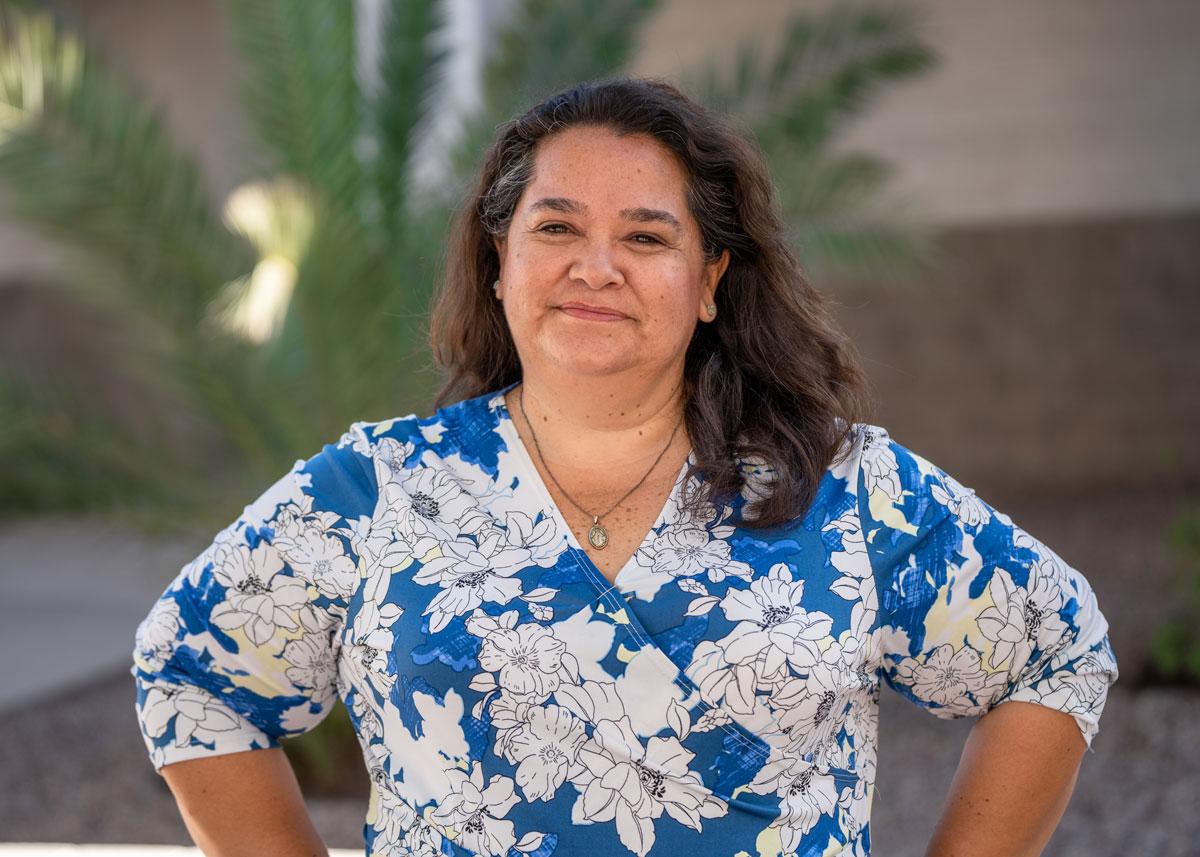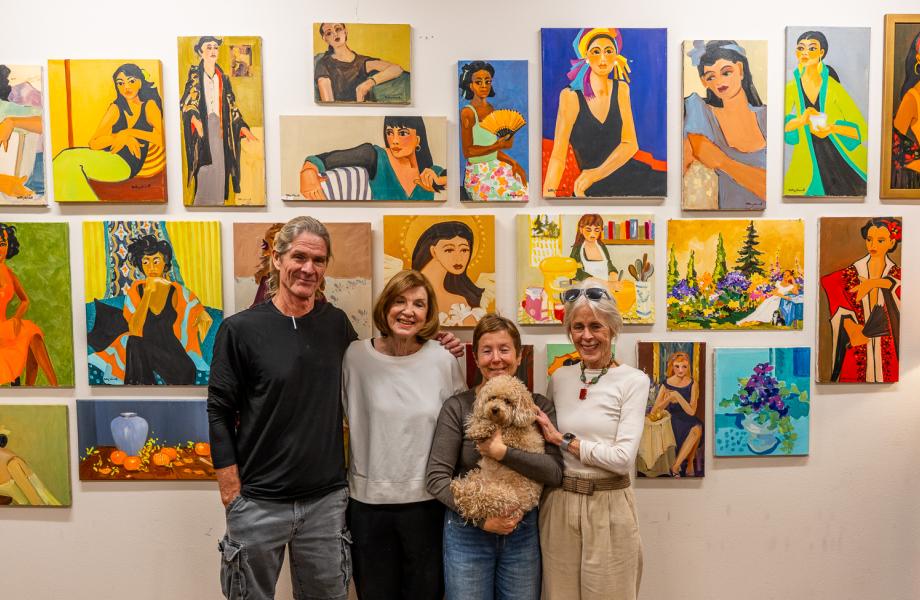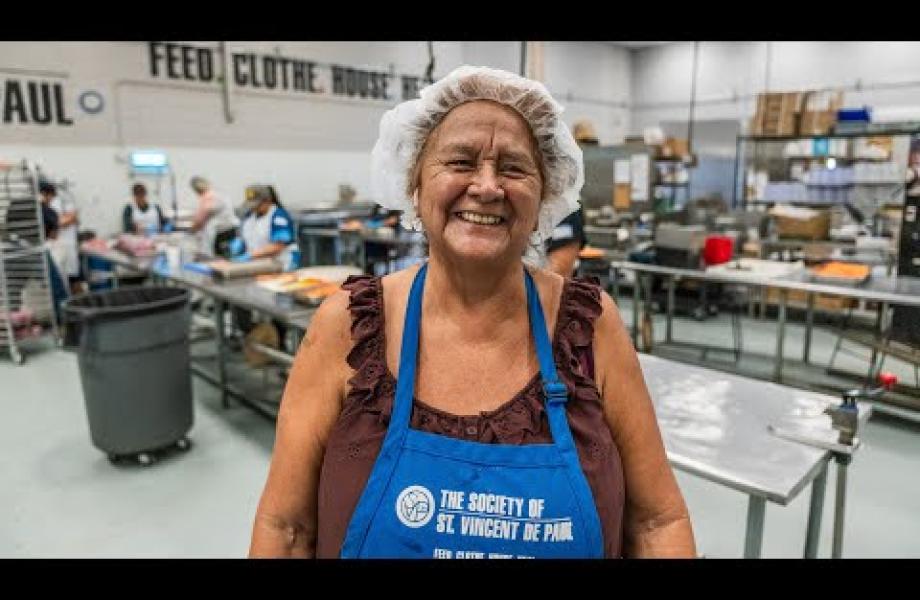What is a Vincentian?
St. Vincent de Paul is known for its loving embrace as it feeds, clothes, houses and heals people in need. That embrace is made of two different arms of the organization — one effort based out of SVdP’s campus locations and another effort operated by a network of more than 80 different Vincentian conferences of charity.
Not sure what a “Vincentian” is or what the term “conference of charity” means? You’re in the right place!
In the video above, a handful of Vincentians help explain how and why they volunteer their time to serve their community through SVdP in their neighborhood. SVdP’s Irma Leyendecker helps guide the video. She has the unique experience of not only serving as a Vincentian, but also serving as a member of staff on SVdP’s main campus. In her role as director of Vincentian Engagement Support Services, Irma oversees the integration and connection of both arms of SVdP, so that campus staff and Vincentians build on each other’s strengths and resources to uplift the community and help as many vulnerable individuals and families as possible.
Discover the Vincentian mission in the video above and through a Q-&-A below with Vincentian Engagement and Support Services Director Irma Leyendecker.
What exactly is a Vincentian?
Our Vincentians are a specially trained group of volunteers for SVdP who answer the call of our neighbors in need. They’re based out of the local chapters or conferences all across central and northern Arizona. Many are based out of Catholic parishes, though not all of them, and they work in their own neighborhoods. They go through a special training class and go out in pairs to do home visits. They’re the ones who bring love and joy to our neighbors. Simply put, they’re neighbors helping neighbors.
What is a conference of charity?
Conferences are groups of Vincentians who are called through their faith to serve their neighbors in need through charity works. Many conference groups are based out of Catholic churches. That’s often where people know they can turn for help and where Vincentians are poised to help. They begin with a one-on-one conversation and build relationship with that neighbor in need to find out, “How can we help you?”
That initial conversation is where Vincentians assess what else they can help that person with. Is it a car payment or car repair? Maybe it is utility assistance or rental assistance. Essentially they ask, “How can St. Vincent de Paul help your family?” And usually that starts with a food box and a home visit.
What happens on a home visit?
Home visits are the foundation of what we do and how we connect with our community. When a neighbor calls the conference or the local chapter, they let them know that they're in need. There might be a five-day notice for a utility or electricity shut off. Maybe the family doesn't have food. So, the conference and the Vincentian volunteers collect a food box, go out two-by-two, and visit the family at their home.
It's really just neighbors helping neighbors. They deliver food boxes, rental assistance, utility assistance. Sometimes they bring the love and the care and the joy of the Vincentian family, and they pray with them, or they ask to pray for them, and the family can connect and realize that even though they're struggling right now, they're not alone — that there are people who care. That when your struggles may seem so hard and overwhelming, you don't know what to do, and you don't know who to turn to, our Vincentians are there. Our conference is there. St. Vincent de Paul will be there.
And so our neighbors start to really learn that St. Vincent is a place of hope. It's a place that they can always call upon and that we’ll answer those calls for help.
How do home visits and Vincentians date back to the Society’s founding?
We were founded in France in 1833. A college student, Frederick Ozanam, and his fellow students were having discussions about the needs in France, the poor, the hungry, the blight they were seeing in the area. They sat in a classroom, and they talked about what everybody should do, and that's when the professors and the priests at that college said, “That's great that you all sit around here and talk about what needs to be done, but what are you actually doing about it?”
That really hit Frederick hard, so he and several of his friends from that college decided to go out into the neighborhoods of Paris and deliver food to people’s homes and meet with the hungry and the orphans and the widows and those who were sick in the streets. And to this day, we are still doing the same thing Frederick was doing over 200 years ago: Coming together as a group, going out into our own neighborhoods and helping our neighbors in need.
How many Vincentians are there? What does the scale of their work look like?
SVdP is an international nonprofit with Vincentians around the globe. More locally, SVdP Phoenix — the largest SVdP in the nation — operates on a large scale across central and northern Arizona. A lot of folks don't know that we have over 80 conferences. That's over 80 groups of Vincentians, well over 5,000 Vincentian members, all volunteering in their immediate community to help their neighbors in need. And they do that on a daily basis. Some of them spend a few hours a week answering the phone or maybe going on a home visit or organizing in the food pantry or helping in a dining room. But some spend 40 hours a week out of a desire to serve and meet community need. All together, Vincentians represent an effort that is happening 24 hours a day, seven days a week, 365 days a year, helping neighbors in emergency situations and making sure that they have their needs met.
Why do Vincentians do what they do?
Vincentians feel they have been called to this work by God because they truly want to give back to their community. They don't do this for praise. They don't go out and boast about all of the work that they do. Vincentians serve because they see that there is such a huge need in their own backyard, in their own community, and they want to make sure that they are there to share God’s love and hope and joy to families who have lost that hope, who don't see the joy or the love in the hard circumstances of their life right now. And so our Vincentians, they bring that with them every single time they deliver a food box and every single time they answer the phone.
A lot of folks will look at it and say, “Wow, you give a lot of time.” And what I always hear from the Vincentians is, “I get more out of it than what I'm giving.” It seems like hard work, but to our Vincentians, this is their passion.

Irma Leyendecker is a Vincentian and also serves as the director of Vincentian Engagement Support Services at St. Vincent de Paul Phoenix.



